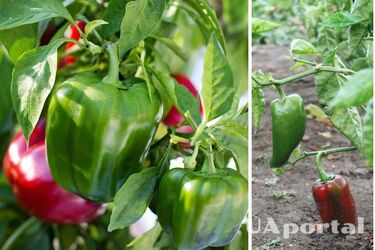How to feed peppers in June to get a rich harvest

In order to get a rich harvest of peppers, it is very important to properly care for the plants and provide them with the necessary nutrients. Experts told us how to properly fertilize peppers after planting them in the garden or greenhouse.
Read also: How to prepare onions for planting to get a rich harvest
Fertilizing peppers should begin after the plant has moved to a new place of growth. Peppers can suffer some damage to the root system during transplantation, so it is important to give the plant time to adapt, which usually lasts 7-10 days. Considering this factor, you should plan the time for fertilizing.
When choosing a fertilizer, you should take into account the condition and stage of development of the pepper. If the seedlings were planted when they already have a bud or are beginning to bloom, then to support the first wave of fruiting, you should focus on phosphorus-potassium fertilizers. It is also necessary to stimulate the development of the plant's vegetative mass, which will be the key to the second wave of harvest.
One source of phosphorus is mineral fertilizers such as simple or double superphosphate. Organic fertilizers such as ash are a good source of phosphorus and potassium at the same time.
As for nitrogen, peppers respond better to organic sources of this element. You can use an infusion of chicken or cow manure.
During budding, flowering and fruit formation, peppers need mictroelements such as manganese, iodine, magnesium, molybdenum, zinc and boron. Humate-containing fertilizers can be used to supply them.
If pepper growth has stopped, this may be a sign of poor root development. In this case, you can use root stimulants or succinic acid, which is diluted in water and watered over the plants.
You should also take into account the acidity of the soil, as peppers do not tolerate an acidic environment. If the soil on the site is too acidic, you can add chalk or dolomite flour. These agents should be thoroughly mixed with the soil near the plants or diluted in water and poured under the root of the pepper.
Remember that any fertilization should be applied at a distance from the stem, and around the root system of the plant. Avoid direct contact with the root neck of the plant.
As a reminder, ants can harm your plants, so you need to fight them. Read how to do it in our article.
If you want to get the latest news about the war and events in Ukraine, subscribe to our Telegram channel!
